Montana
These states are still sending out stimulus checks

Stimulus checks were all the rage in 2020 as the pandemic destroyed millions of jobs and choked Americans’ ability to keep up with their household budgets. While most pandemic-era aid dried up years ago, some states are still dispatching stimulus-style payments.
In most cases, the payments come in the form of a property or income tax rebate. Places like New Mexico and Montana have been able to issue these rebates because their state budgets experienced a surplus after taking in billions of dollars in pandemic relief from the federal government. Montana saw a $1.9 billion surplus for fiscal year 2022 while New Mexico’s surplus has reached $3.6 billion, the Associated Press reported.
Here are 5 states where residents may still get a stimulus check.
Idaho
Idaho plans to send roughly 800,000 rebates totaling up to $500 million by the end of this year, according to an announcement made by state tax officials last October. The Special Session Rebate checks range from $300 for residents who file their state taxes individually to $600 for families that file jointly. Anyone who lived in the Gem State all year in 2020 and 2021 is eligible.
Residents who haven’t received their check yet can track the payment at tax.idaho.gov/rebate.
Illinois
About six million residents were slated to receive income and property tax rebates, the state announced last year. Those payments began flowing last September, CBS Chicago reported. But it will likely take months for everyone to receive their checks, according to state tax officials.
The property tax rebate is $300 maximum. The income tax rebate is $50 for state residents who file as a single person, and up to $100 for couples who file jointly. Families with dependents can receive up to $300.
Massachusetts
Lawmakers in the Bay State said last year that roughly 3 million taxpayers would be issued about $2.9 billion in tax rebate dollars, CBS News Boston reported. The amount was roughly 13% of a resident’s 2021 state income.
Residents began seeing their “Chapter 62F” payments in October and most taxpayers have received the funds by now. Anyone who hasn’t gotten their payment has until September 15 to file their 2021 state taxes in order to qualify.
Montana
Montana homeowners will get up to $1,350 in property tax rebate checks over the next two years, Gov. Greg Gianforte said last month.
To qualify, a person must have lived in or owned a Montana residence for at least seven months last year and paid property taxes on that residence. Homeowners can begin applying for the rebates August 15 by visiting getmyrebate.mt.gov. Claims must be filed by October 1.
New Mexico
About 26,000 low-income New Mexicans began receiving $500 or $1,000 “economic relief” payments last month, state officials said. The stimulus payments, all of which have been issued, were part of a $15 million effort to distribute state surplus funds, according to New Mexico’s Human Services Department.
The Land of Enchantment also sent separate income tax rebates of $500 or $1,000 to almost 1 million residents who filed a tax return in 2021. Those checks went out at the end of June, State officials said. Any state resident who hasn’t filed a 2021 tax return has until May 31, 2024 to do so in order to receive the rebate check.

Montana
8 Best Places To Retire In Montana

Retiring in Montana offers a blend of natural beauty, outdoor activities, and small-town charm that’s hard to beat. Known for its low population density, Montana provides retirees with a peaceful and uncrowded environment. The state boasts relatively low property taxes and no sales tax, making it a financially attractive option. For outdoor enthusiasts, Montana’s pristine lakes, vast national forests, and iconic destinations like Glacier National Park provide endless recreation opportunities. Healthcare access is improving, with high-rated facilities in towns like Whitefish and Billings. Whether it’s fishing on the Yellowstone River, golfing in the Flathead Valley, or enjoying vibrant community events, these eight towns in Montana are some of the best places to retire in the state.
Dillon
If you enjoy small-town life in a place that feels truly safe and comfortable, consider retiring in Dillon. Dillon houses a tight-knit community of less than 4,000 people, fostering a safe and social environment for residents. A retiree here has access to a good university — the University of Montana Western — meaning one can pick a course and enjoy learning during their sunset years. Moreover, the Barrett Hospital and Healthcare has been providing amazing healthcare to residents in the area since 1989. The hospital offers senior life solutions designed to meet the needs of people 65 or older.
To stay fit, one can have a nice little walk along the Beaverhead River with trails such as the Cliff Trailhead. For a more relaxing time out, Clark Canyon Reservoir is a short drive away, perfect for trout fishing and camping. To top it off, Dillon is an affordable destination, with a median home value of $363,000. This is $90,000 less than the state average, so retirees will have lots of cash to spare.
Lewistown
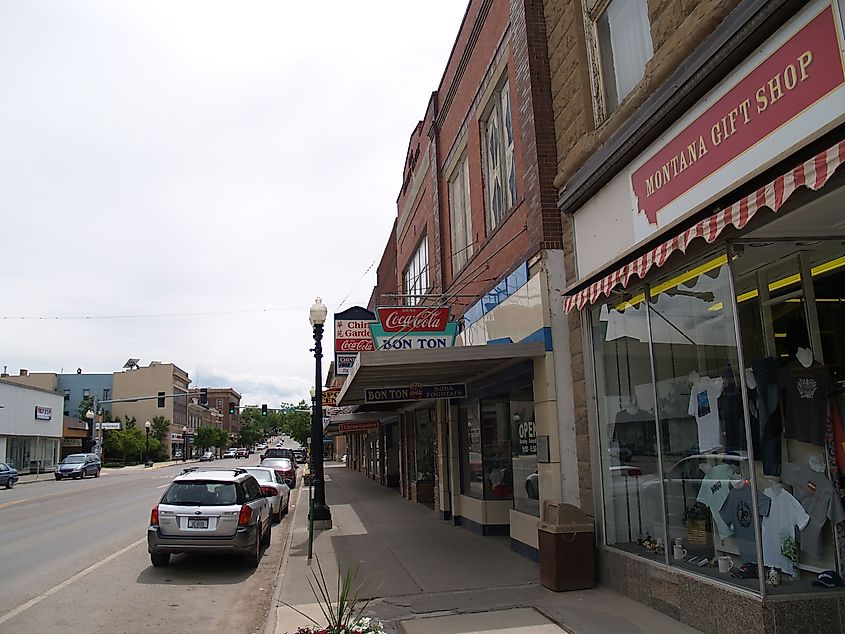
You know a town is the best place to retire when a whopping 27% of its population is above the age of 65. Fitting this criteria, Lewistown offers seniors a robust social environment with plenty of like-minded people. However, aside from its near-perfect social landscape, Lewistown dabbles up as one of the safest towns in the entire state. In short — a retiree here will be at peace.
As to amenities, Lewiston has no shortage. The Lewistown Farmers Market, with its organic goods and crafts, is an excellent place for daily errands. The Central Montana Medical Center has a 24-hour emergency response, so there is no need to make a back-breaking trip out of town, especially if one is under the weather. The other nice thing is that Lewistown’s median listing home price was just $264,000, a steal by Montana standards.
Retirees have plenty of things to do in their free time, such as a stroll through the Lewistown Community Labyrinth Garden, for that one hour of calm and clarity. Or, meet up with your friends to tee off at the 9-hole Pine Meadows Golf Course. Seniors also have immediate access to Big Springs Trout Hatchery & Park, a lovely, well-manicured park with a creek twisting through it.
Whitefish
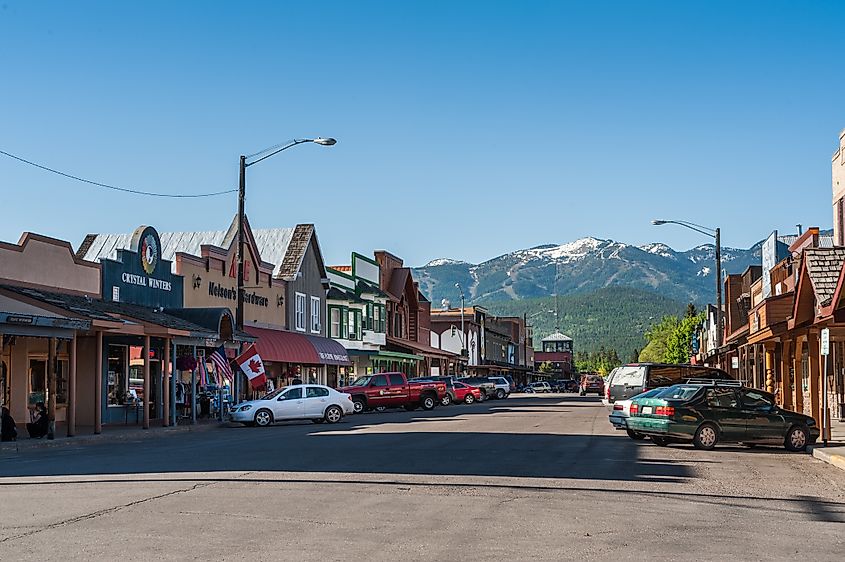
Whitefish offers natural beauty, outdoor adventure, and top-notch amenities, making it a sought-after yet pricey retirement destination. With a median home listing price of $860,000, it’s on the higher end, but alternatives like The Springs at Whitefish, a senior living community with 24/7 health staff, wellness events, and housekeeping, make life here more accessible. Their two-bedroom residences start at $8,000 monthly, providing a comfortable option for retirees seeking high-quality care. Moreover, healthcare in Whitefish is exceptional, thanks to Logan Health-Whitefish, which received a 5-star overall rating from the Centers for Medicare and Medicaid Services.
For nature lovers, Whitefish is a paradise. Trails abound for hiking and exploring, while Whitefish Lake offers exceptional fishing opportunities. Flathead Lake, the largest natural freshwater lake in the western U.S., is just a short drive away. Meanwhile, Glacier National Park, with one million acres of 700 miles of Rocky Mountain trails and glacial views, promises endless adventures.
Belgrade
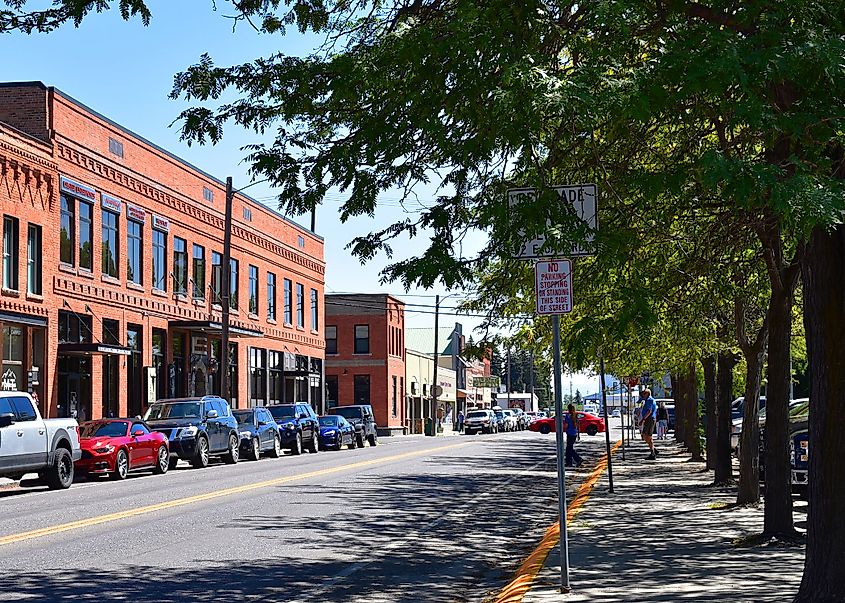
Belgrade is a more youthful destination, where only 7% of the locals are senior citizens. However, far from being a downside, many retirees thrive in such social settings. The youthful energy makes it a great place to live with the family, and your grandkids will always want to visit. Visiting Belgrade is also easy as Bozeman is just a blink away, meaning fantastic access to big-city amenities. Additonally, a retiree here has the Bozeman Health Deaconess Hospital, a frequent winner of the America’s 100 Best Hospitals for Pulmonary Care Award.
The Gallatin River flows nearby, an international airport is a heartbeat away, and the immediate scenery is all about beautiful mountains. You will also be a short drive away from Custer-Gallatin National Forest. This two million-acre expanse opens up endless hiking, biking, and camping opportunities amidst landmarks like the Gallatin Mountains and Madison River. No matter how you spend your days, BeeHive Homes Of Belgrade is an assisted-living facility perfect for a good night’s sleep. The facility boasts a warm, residential setting with daily housekeeping, private rooms, and an outdoor courtyard.
Kalispell
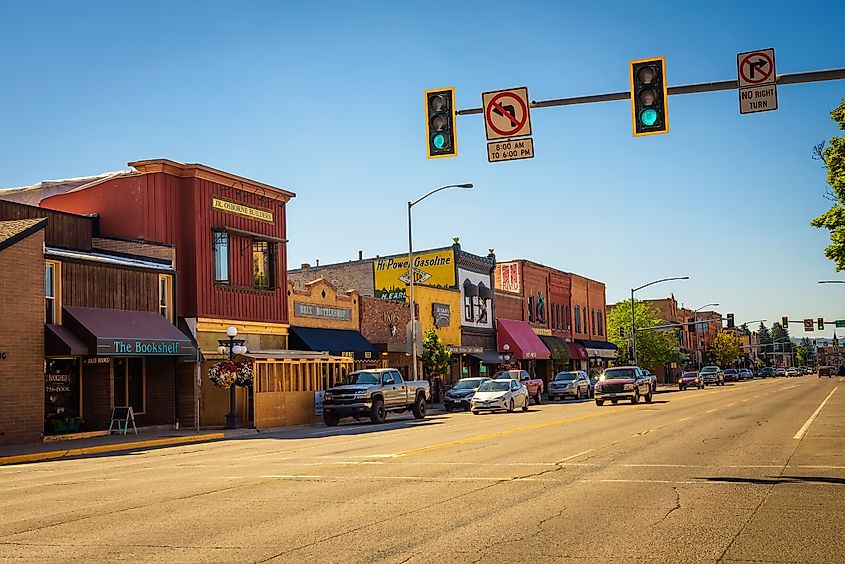
Retiring in Kalispell means you will be in the Flathead Valley, one of the most unspoiled and relaxing places to play golf in the entire country. Flathead is one of the 10 best golf retirement destinations. That is according to Golf Digest, the world’s leading golf publication. So, what are your options? There is the Buffalo Hill Golf Course, which boasts one of the best practice facilities in the Pacific Northwest. Another excellent option is Northern Pines, designed by two-time U.S. Open Champion Andy North. Even beyond golf, expect the outdoors here to leave you in awe. You have the Lone Pine State Park, with its scenic overlooks, Flathead Lake, and the jaw-dropping Foy’s Lake Park, a fantastic spot for an afternoon dip.
Worried about amenities? No need. Residents in Kalispell have doorstep access to Logan Health, a 2025 winner of the Outpatient Orthopedic Surgery Excellence Award. The social scene is on-point, considering residents aged 60 and above comprise 18% of the population. While the median home value is a bit high at $540,000, Immanuel Living – Kalispell is an option you may want to consider, especially if your budget is tight. This senior community offers various living options, from quaint apartments at The Terraces to independent patio homes at The Cottages.
Laurel
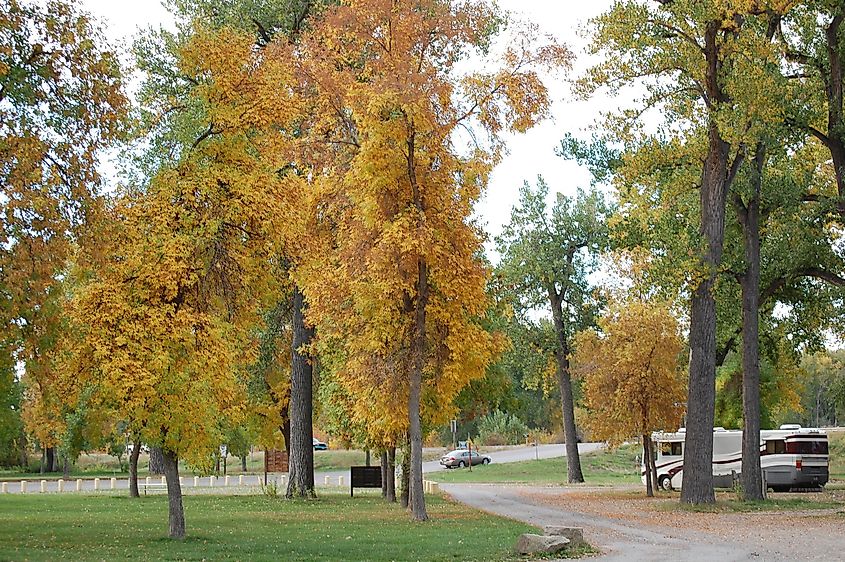
Few towns can beat Laurel’s Fourth of July fireworks show. But that is just a tiny aspect of the town’s warmth and charm. You will enjoy a small-town feel and access to various shopping options, such as a Walmart Shopping Center for daily needs and AutoZone Auto Parts for vehicle requirements. Best of all, Laurel is less than half an hour from Billings, Montana’s largest city, offering access to endless urban amenities such as the Billings-Logan International Airport. Even with its proximity to Billings, the median home value is just $368,000 a steal compared to Montana’s average of $451,000
Those living in Laurel will find no end to the activities in town. Once in a while, an empty nester can enjoy an afternoon round of golf at the Laurel Golf Club, one of Montana’s finest private golf clubs. Moreover, you can fish at the Lion’s Family Park South Side Pond or enjoy some paddling at Cooney State Park.
Livingston
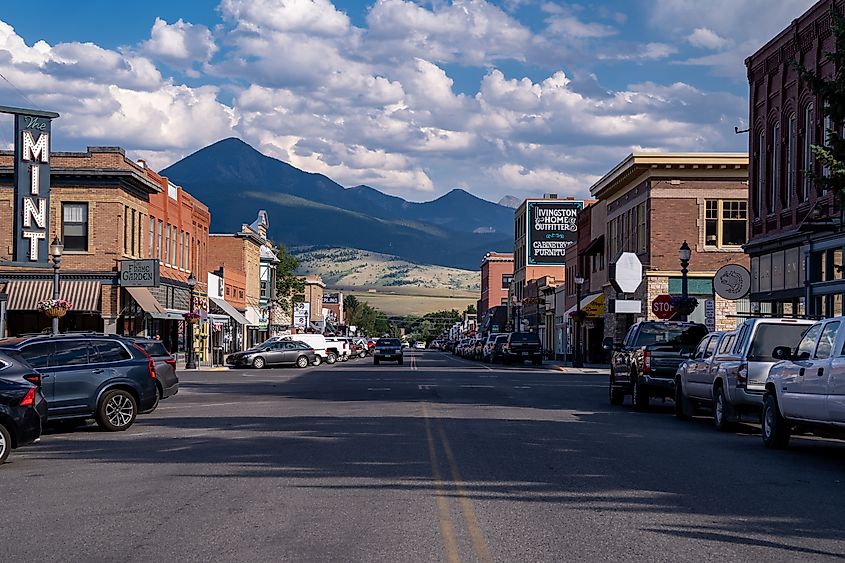
Livingston is surrounded by beautiful mountain views, ideal for the outdoorsy retiree. Plenty of natural landmarks keep residents on their feet, such as the Yellowstone River and the sprawling beauty of the Custer Gallatin National Forest. Those interested in outdoor adventures can head to Custer Gallatin to attempt challenges such as the Passage Creek Falls Trailhead and Wallace Pass. On the other hand, Chico Hot Springs offers a relaxing alternative for an afternoon plunge.
While all the physical activity should keep you fit, Livingston Healthcare is right in town to cover all healthcare concerns. On the social side, Livingston residents aged 65 and above comprise 20% of the town’s population, meaning you can easily find several folks with whom you can share meaningful experiences. Meeting people is even easier thanks to Frontier Assisted Living, a warm, welcoming environment that operates on the triad of kindness, respect, and support.
Glendive
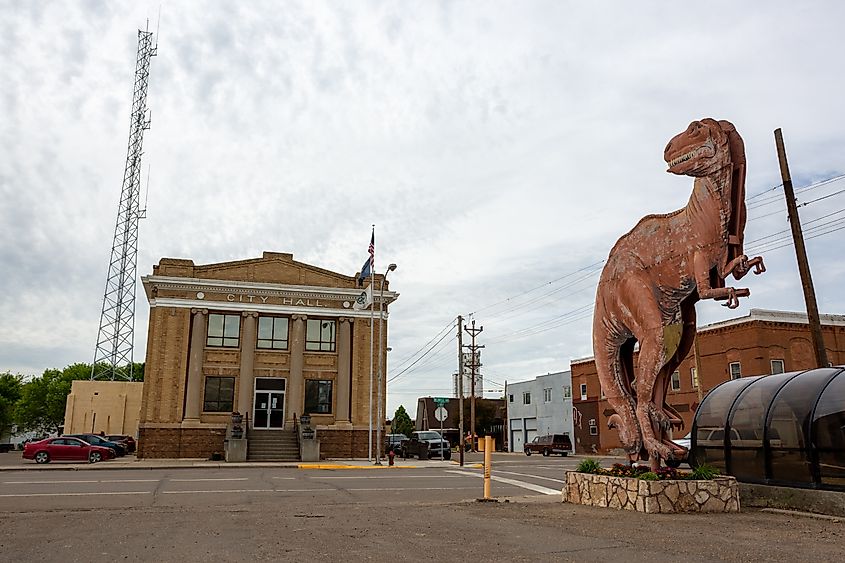
Glendive, nestled in the heart of Eastern Montana, offers retirees a serene setting with stunning landscapes and a welcoming community. The town is surrounded by natural beauty, including the breathtaking Makoshika State Park, Montana’s largest state park, known for its rugged badlands and unique rock formations. Fishing enthusiasts can enjoy the Yellowstone River, renowned for its trout and catfish, while Hollecker Lake provides a peaceful spot for strolling, relaxing, or people-watching. For a quiet escape, Crisafulli Lake offers a rustic charm perfect for unwinding. Meanwhile, seniors interested in golf will appreciate the scenic Cottonwood Country Club, a local gem ideal for a leisurely game.
Healthcare is a strong point in Glendive, with the Glendive Medical Center serving the community since 1913. This 25-bed acute care hospital provides 24-hour emergency services, along with full medical and surgical care, ensuring retirees have access to quality healthcare close to home. Affordability is another highlight of Glendive, as it boasts the lowest median home price on this list at just $181,000.
The Takeaway
Montana offers retirees a rare combination of breathtaking natural beauty, vibrant communities, and affordable living. From the serene landscapes of Glendive to the active social scene of Lewistown and the outdoor adventures in Whitefish, each town has its unique charm. The state ensures a comfortable retirement lifestyle with low property taxes, no sales tax, and state-of-the-art healthcare facilities. Whether you prefer fishing on pristine lakes, exploring national parks, or finding tranquility in small-town living, Montana truly makes the golden years extraordinary.
Montana
Montana Lottery Powerball, Lucky For Life results for Jan. 18, 2025
The Montana Lottery offers multiple draw games for those aiming to win big. Here’s a look at Jan. 18, 2025, results for each game:
Winning Powerball numbers from Jan. 18 drawing
14-31-35-64-69, Powerball: 23, Power Play: 2
Check Powerball payouts and previous drawings here.
Winning Lucky For Life numbers from Jan. 18 drawing
04-12-13-32-43, Lucky Ball: 17
Check Lucky For Life payouts and previous drawings here.
Winning Lotto America numbers from Jan. 18 drawing
16-28-41-47-52, Star Ball: 03, ASB: 04
Check Lotto America payouts and previous drawings here.
Winning Big Sky Bonus numbers from Jan. 18 drawing
07-11-14-20, Bonus: 05
Check Big Sky Bonus payouts and previous drawings here.
Winning Powerball Double Play numbers from Jan. 18 drawing
07-34-40-48-57, Powerball: 17
Check Powerball Double Play payouts and previous drawings here.
Winning Montana Cash numbers from Jan. 18 drawing
06-07-29-35-40
Check Montana Cash payouts and previous drawings here.
Feeling lucky? Explore the latest lottery news & results
When are the Montana Lottery drawings held?
- Powerball: 8:59 p.m. MT on Monday, Wednesday, and Saturday.
- Mega Millions: 9 p.m. MT on Tuesday and Friday.
- Lucky For Life: 8:38 p.m. MT daily.
- Lotto America: 9 p.m. MT on Monday, Wednesday and Saturday.
- Big Sky Bonus: 7:30 p.m. MT daily.
- Powerball Double Play: 8:59 p.m. MT on Monday, Wednesday, and Saturday.
- Montana Cash: 8 p.m. MT on Wednesday and Saturday.
Missed a draw? Peek at the past week’s winning numbers.
Winning lottery numbers are sponsored by Jackpocket, the official digital lottery courier of the USA TODAY Network.
Where can you buy lottery tickets?
Tickets can be purchased in person at gas stations, convenience stores and grocery stores. Some airport terminals may also sell lottery tickets.
You can also order tickets online through Jackpocket, the official digital lottery courier of the USA TODAY Network, in these U.S. states and territories: Arizona, Arkansas, Colorado, Idaho, Maine, Massachusetts, Minnesota, Montana, Nebraska, New Hampshire, New Jersey, New Mexico, New York, Ohio, Oregon, Puerto Rico, Texas, Washington, D.C., and West Virginia. The Jackpocket app allows you to pick your lottery game and numbers, place your order, see your ticket and collect your winnings all using your phone or home computer.
Jackpocket is the official digital lottery courier of the USA TODAY Network. Gannett may earn revenue for audience referrals to Jackpocket services. GAMBLING PROBLEM? CALL 1-800-GAMBLER, Call 877-8-HOPENY/text HOPENY (467369) (NY). 18+ (19+ in NE, 21+ in AZ). Physically present where Jackpocket operates. Jackpocket is not affiliated with any State Lottery. Eligibility Restrictions apply. Void where prohibited. Terms: jackpocket.com/tos.
This results page was generated automatically using information from TinBu and a template written and reviewed by a Great Falls Tribune editor. You can send feedback using this form.
Montana
Fish and Wildlife Commission sued over open-meeting law, black bear quotas

The Montana Fish and Wildlife Commission was sued Friday for allegedly ignoring state open meeting laws when it approved eliminating some black bear hunting quotas in December.
The seven-member commission unanimously agreed at its Dec. 19 meeting to drop a rule that closed black bear hunting in certain hunting districts of northwest Montana if hunters killed more than 37% of the estimated female bear population there. The lawsuit, filed by wildlife and conservation group members from across the state, claims the commissioners failed to publish the proposal before the meeting and then took action on it without proper notice or public comment.
“I personally care a lot about black bears,” said Denise Boggs, lead plaintiff in the lawsuit and a former Fish, Wildlife & Parks wildlife division employee. “But we are litigating this because the public process and open meeting laws were violated.”
During a discussion of “corrections and amendments to black bear, antelope, deer bighorn sheep and boundary descriptions/clarifications” listed on the agenda during the December meeting, Region 2 Commissioner Jeff Burrows of Hamilton proposed the black bear rule change. It had not been included in the published agenda before the meeting, according to the lawsuit.
In the online recording of the meeting, Commission Chair Lesley Robinson said Burrow’s proposal was “one the public has not seen, which is perfectly fine. This is completely fine for the amendments to come at the meeting.”
Requests for comment to Robinson and Montana FWP spokesman Greg Lemon were not returned by Friday afternoon.
The change affected FWP Region 1 efforts to sustain black bear populations in northwest Montana. Region 1 Wildlife Manager Neil Anderson told the commissioners in December that hunters were particularly successful in the 2021 and 2022 seasons, killing about 1,500 black bears combined. But through 2023 and 2024, they only took about 900.
Region 1 Commissioner Pat Tabor of Whitefish said hunters were telling him that deer and elk populations were down in northwest Montana and they believed black bears were partly responsible.
“A slight decline in black bears is in order until we get stabilization in ungulates,” Tabor said during the December meeting. “I got a tremendous amount of traffic on this. We need to be more aggressive in predator management in Region 1.”
Region 3 Commissioner Susan Kirby Brooke of Bozeman added she thought over-large populations of black bears were the reason more residents in Kalispell and Columbia Falls were having bear conflicts at their homes.
“If the population is stable, they wouldn’t be coming into neighborhoods,” she said. However, FWP staff said those two things were not related.
“The challenges we have managing altercations with bears is largely independent of population size and hunting,” FWP game management Bureau Chief Brian Wakeling told the commissioners. “Hunting is not the primary method we use to address human conflict that arises from bear interactions or altercations.”
Anderson added that bear-human conflicts in neighborhoods had more to do with food supplies. In dry years when huckleberry crops are small, bears seek out human foods like unsecured garbage, bird feeders and dog food.
“It’s a little more complicated than just black bear numbers,” Anderson told the commissioners. “All the [residential] development is occurring in the valleys and riparian areas [that bears used to frequent]. People want to live there.”
Region 1 wildlife managers suggested the 37% female kill quota in January 2024. The move came in response to the recent extension of black bear hunting seasons, along with new opportunities to chase black bears with hounds. That likely meant more females getting killed, which raised the potential for a population downturn.
“We wanted to use this method for a couple years, and then come back to next year’s biennial season-setting with hard quotas, rather than this 37%,” Wakeling told the commissioners.
But Tabor, who recently retired from an hunter outfitting and guide company in northwest Montana, said he thought the 37% female kill quota was “uber-conservative,” and asked if a limit of 40% or 45% was possible.
Anderson replied that killing 40% of the females in a bear management unit was the expected threshold where populations could start crashing. The 37% point was chosen to avoid reaching that tipping point.
Mike Bader, a Missoula-based wildlife consultant and plaintiff in the lawsuit, said the divergences between what the commissioners proposed and what their FWP staff research showed was part of the reason why the U.S. Fish and Wildlife Service declined to delist grizzly bears from the Endangered Species Act last week. Federally protected grizzlies are often killed in encounters with black-bear hunters, and the FWS decision cited inadequate state regulatory controls on those hunters as a serious risk to grizzly survival.
“They just don’t seem ready to manage the species,” Bader said Friday. “They can’t just say ‘we’ll make adjustments and fix it next year.’”
A group of 40 wildlife experts made a similar point in a letter to the Fish and Wildlife Commission after the December meeting.
“This is management based on the whimsy of commissioners rather than on data, analysis and consultation with biologists on the ground,” the letter stated. “A particular irony in this case is that FWP recently initiated research to update our understanding of both black bear abundance and elk population dynamics in northwestern Montana. Rather than awaiting the results from FWP staff tasked with providing objective information, the commission moved forward based on some anecdotes they heard and their obvious personal bias against predators.”
During a public comment session later in the meeting, several speakers supported removal of the black bear quota. Two hunting outfitters noted it was difficult for hunters in the backcountry to know if their district black bear season had been closed early because the quota had been reached. They also said it was hard to book late-season hunting clients not knowing if the district might be closed before the regular season ended.
Mike Mershon, of the Montana Wildlife Federation, praised a different rule change involving bighorn sheep, but then added a warning about the commission’s process.
“These agenda amendments make it difficult to get it out to the public,” Mershon said, “so they can respond to developing amendments.”
-

 Science1 week ago
Science1 week agoMetro will offer free rides in L.A. through Sunday due to fires
-
/cdn.vox-cdn.com/uploads/chorus_asset/file/23935558/acastro_STK103__01.jpg)
/cdn.vox-cdn.com/uploads/chorus_asset/file/23935558/acastro_STK103__01.jpg) Technology1 week ago
Technology1 week agoAmazon Prime will shut down its clothing try-on program
-

 News1 week ago
News1 week agoMapping the Damage From the Palisades Fire
-
/cdn.vox-cdn.com/uploads/chorus_asset/file/25826211/lorealcellbioprint.jpg)
/cdn.vox-cdn.com/uploads/chorus_asset/file/25826211/lorealcellbioprint.jpg) Technology1 week ago
Technology1 week agoL’Oréal’s new skincare gadget told me I should try retinol
-
/cdn.vox-cdn.com/uploads/chorus_asset/file/25832751/2192581677.jpg)
/cdn.vox-cdn.com/uploads/chorus_asset/file/25832751/2192581677.jpg) Technology4 days ago
Technology4 days agoSuper Bowl LIX will stream for free on Tubi
-

 Business5 days ago
Business5 days agoWhy TikTok Users Are Downloading ‘Red Note,’ the Chinese App
-
/cdn.vox-cdn.com/uploads/chorus_asset/file/25835602/Switch_DonkeyKongCountryReturnsHD_scrn_19.png)
/cdn.vox-cdn.com/uploads/chorus_asset/file/25835602/Switch_DonkeyKongCountryReturnsHD_scrn_19.png) Technology2 days ago
Technology2 days agoNintendo omits original Donkey Kong Country Returns team from the remaster’s credits
-

 Politics1 week ago
Politics1 week agoTrump to be sentenced in New York criminal trial




















